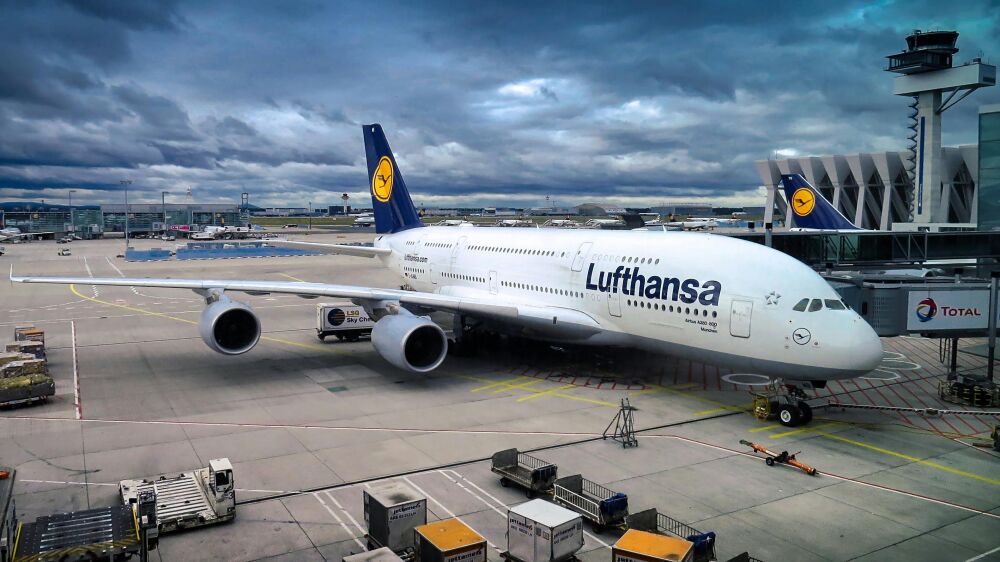
Transport Documents

Mar 19, 2024
If there is one aspect in transportation that cannot be overlooked, it is documentation. Regardless of the scale of the operation, every mode of transportation necessitates thorough documentation to elucidate precisely what is transpiring to all parties involved.
In this article, we will concentrate on the various types of transport documents essential in (international) goods transportation.
Which transport documents do you need for maritime transport?
In fact, this applies to all modes of transportation: when you import or export, you only need one document for the actual transport—the Bill of Lading.
The term Bill of Lading was first used many years ago (probably centuries ago) and literally means "a list of cargo." So, what does a Bill of Lading do in essence? Exactly, it provides the details of the goods being transported. Is there more? Absolutely. Even if you outsource the transportation of your goods, it is still very valuable to know precisely what a Bill of Lading does and what possibilities exist.
What is a Bill of Lading?
- It functions as a receipt. The issuance of a Bill of Lading by the captain, acting as a representative of the carrier, signifies that the goods have been received on board his ship. Therefore, it serves as a transport document.
- Additionally, it holds significant value. Why? Because a Bill of Lading grants the holder the right to deliver the goods. Consider it akin to proof of ownership
Transport by ship on inland waterways
A Bill of Lading can be negotiable, indicating that the right of ownership is transferable. Often, a bank acts as an intermediary in such transactions to ensure that the seller receives payment, and the buyer gains access to the goods.
Now, let's delve into inland shipping. Technically, it still involves transport by ship, but not over "open water.”
Specifically for inland shipping, the CMNI (Convention on the Contract for the International Carriage of Goods by Inland Waterways) consignment note comes into play. Unlike a Bill of Lading used in (international) maritime transport, the CMNI consignment note solely documents the transportation agreements made for the carriage of goods.
The CMNI consignment note is formulated in accordance with Article 11 of the Budapest Convention on the Contract for the Carriage of Goods by Inland Waterways.
This consignment note must include specific information. For instance, it should explicitly state that it is a consignment note and incorporate details such as the carrier's and consignee's information, along with the ship's number responsible for transporting the goods.
Which transport documents are required for railway transportation?
For the transportation of goods by train, the CIM (Convention Internationale concernant le transport des Marchandises par chemin de fer) consignment note is employed.
The CIM is a component of what is termed "mandatory law," implying that, in general, its provisions must be adhered to. While additional agreements can be made with a carrier and documented in a contract, it is imperative to note that deviation from the mandatory provisions of the CIM is not permissible. Furthermore, the document itself is non-transferable.
We extend our apologies for the introduction of a French term; CIM stands for "Contrat de Transport International ferroviaire des Marchandises" or the "International Convention for the Carriage of Goods by Rail." The consignment note is a requisite condition within a transport agreement governed by this convention.
The CIM consignment note is generated in five copies:
- The original consignment note intended for the recipient.
- The accompanying letter for the railway company at the destination station.
- The arrival sheet for the railway company in the country of arrival.
- A copy of the consignment note for the sender.
- The shipping note for the railway company at the place of departure.
The transport document for air transportation: the AWB
For the transportation of goods by airplane, we utilize the Air Waybill, commonly referred to as the AWB. It is a non-negotiable transport document that encompasses the transportation process from one airport to another.
The distribution of copies is as follows:
- The first copy, distinguished by its green color, is designated for the carrier who issued the document.
- The second copy, in pink, is allocated for the recipient.
- The third document, colored blue, is intended for the shipper.
- The fourth copy, in brown, functions as a proof of delivery.
- The remaining four copies, all in white, are duplicates as previously mentioned.
Air Waybill (AWB)
Typically, a minimum of eight copies of an Air Waybill are generated for transportation, with the initial three copies recognized as "original" documents.
Which transport documents are utilized for road transportation?
When it comes to the transportation of goods by road, two options are available. For domestic transportation, the AVC consignment note is commonly employed.
AVC stands for General Transport Conditions. For international transportation, the applicable document is the CMR consignment note, which boasts an elegant French name: Convention Relative au Contrat de Transport International de Marchandises par Route.
The distinction lies in the specific provisions related to loading and unloading present in the AVC conditions but absent in the CMR conditions. While some carriers exclusively use the CMR consignment note, others opt for both to ensure comprehensive coverage for all parties involved, particularly concerning loading and unloading.
Further documentation
Above, we provided a brief overview of the primary transportation documents specific to each mode of transportation. However, these are not the sole documents involved in (international) goods transport. Here, we will highlight several additional documents frequently encountered:
- EX-A: An export document is mandatory when exporting goods produced within the EU to a country outside the Union.
- CoO (Certificate of Origin): This document indicates the origin of a product. In some instances, when importing goods from a specific country, possessing a CoO may make you eligible for a customs duty discount. In other cases, the certificate is a requisite for importing the goods.
- DGD (Dangerous Goods Declaration): This declaration is necessary for transporting hazardous substances by sea.
- ADR Certificate: This certificate authorizes the transport of hazardous substances by land.
- Excise Accompanying Document: This administrative document is mandatory when transporting excise goods (such as alcohol) within the EU. The prerequisite is that excise duty has been settled in the member state of dispatch, and the goods are destined for another member state.
- Veterinary Certificate: This certificate is essential when shipping live animals and animal products to third countries.
- Phytosanitary Certificate: This certificate is required when shipping flowers or plants, signifying that the products are healthy and free from diseases.
- ISPM 15: This standard mandates that all wooden packaging materials used for transporting goods must comply with specific treatment measures to prevent organisms and parasites from surviving.
Want to know more? Need help?
Can we assist you with your transport documents?
Surely, there are other documents that play a crucial role in facilitating the transportation of goods. In this article, we have covered the most commonly used ones.
We would be delighted to assist you with any inquiries or if you are looking to ship goods, ensuring that all documentation is meticulously organized!
Related blogs

A portal, is it really necessary, or can we no longer do without?

Customs Matters: What Should I Do With Them?

Incoterms: What Are They? And How Do You Use Them?

The Advantages and Disadvantages of LCL Shipments

10x answers to the most important freight questions

Opting for Train Transportation: When Is It the Right Choice?

What are the benefits of air freight? And when do you choose it?

Getting started with imports

What does a forwarder do? And do I need a forwarder?








